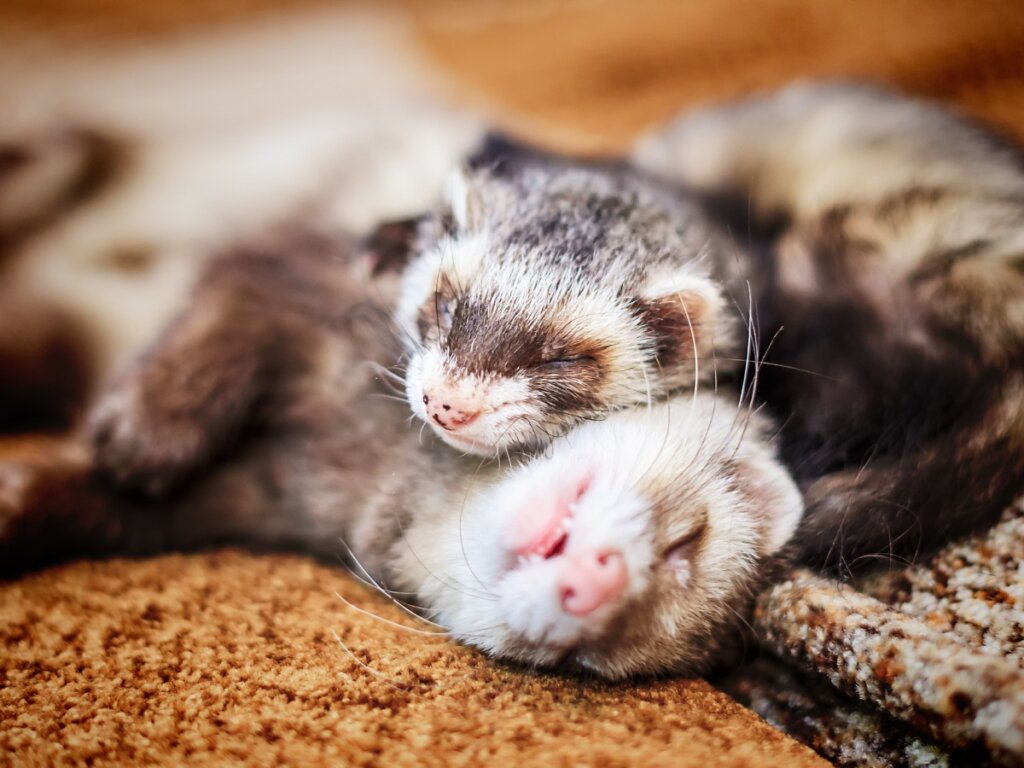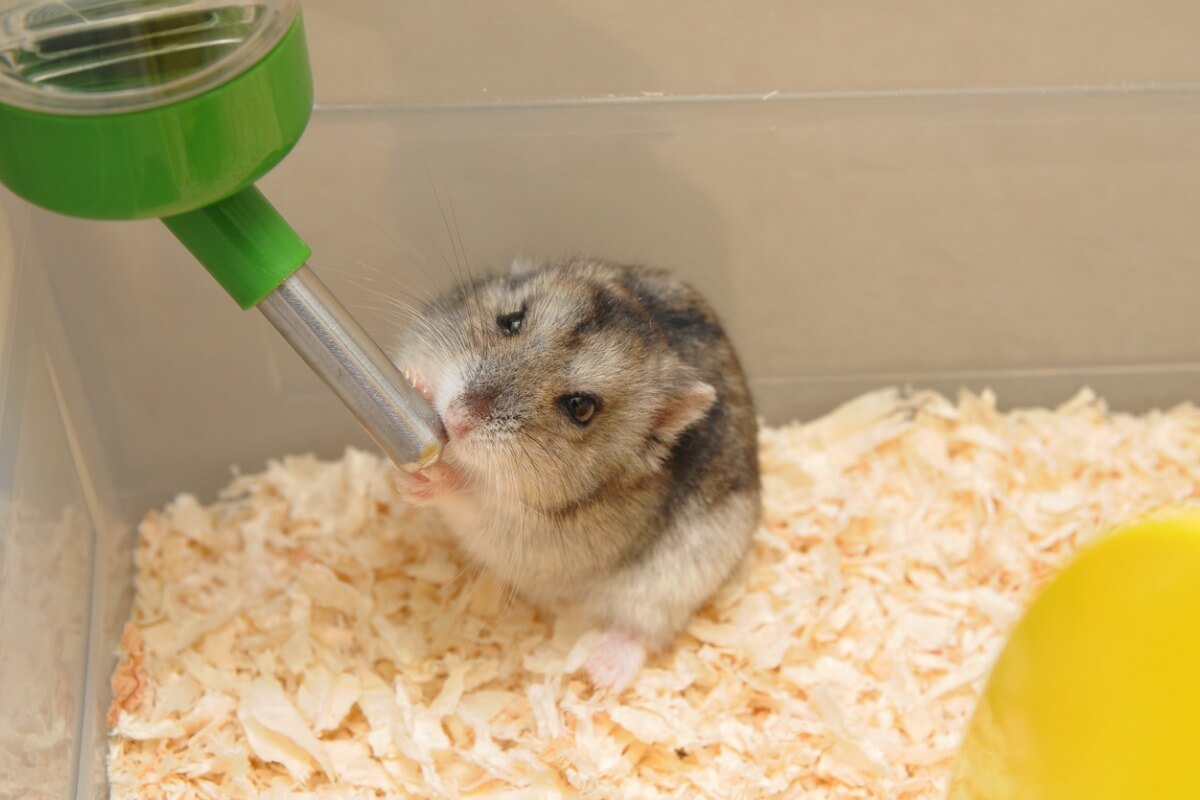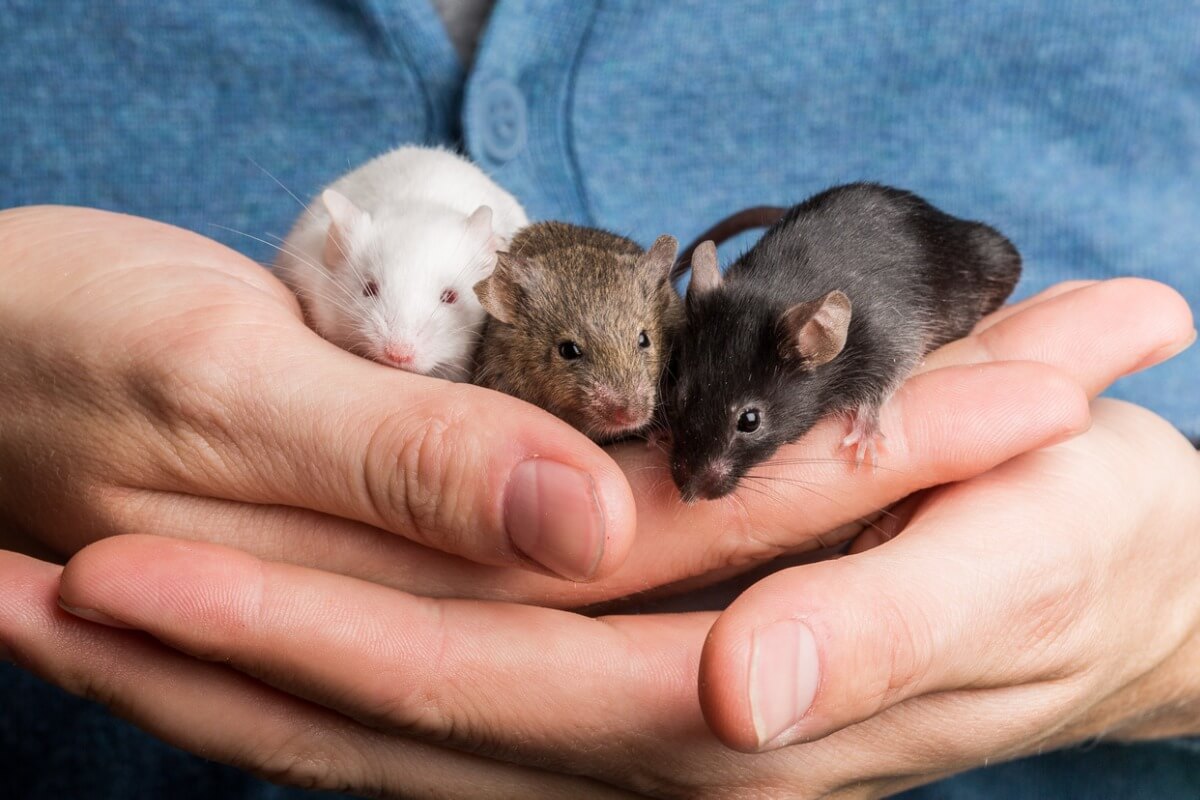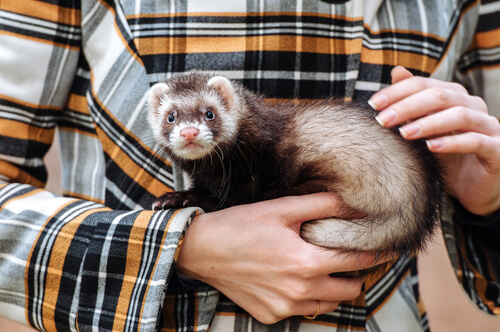The Sleepiest Rodents!

Rodents have become quite popular as pets these days, as their small size and cute appearance have won the hearts of many people. However, what some owners don’t realize is how sleepy they are. Find out what the sleepiest rodents are right here! Don’t go away!
Although it’s true that small pets are easy to keep, some of them sleep too much and aren’t always easy to live with. This could lead to conflicts with owners, as expectations may be different from reality when living with a rodent.
What are rodents?
Rodents are a type of mammal characterized by their habit of gnawing. This means that they file down the surface of their food or any object by means of small bites. Such friction deteriorates their teeth, which isn’t a problem, as these grow steadily throughout their lives.
Most of these small animals have short legs, are quadrupeds and their incisor teeth are very obvious. The group enjoys great biological success in nature, as they tend to have a high reproduction rate, a great ability to hide and a great capacity to find and store food.
It’s estimated that there are more than 2000 identified rodent species, which represents about 40% of all mammals. Most of these animals are distributed in tropical areas of the globe, although some also survive in fairly cold climates.
Thanks to their characteristics, several types of rodents have become popular for use as pets. However, information about their care and life in captivity is still scarce. For this reason, some owners try to handle them like any other pet, which isn’t always the best choice.
The sleepiest rodents
Rodents are one of the most frequent targets for different predators. Because of this, they spend much of their time hiding in burrows or hiding places. In addition, to avoid unnecessary expenditure of energy, they have adapted to sleep most of the day and only become active at certain “safe” times.
This curious behavior of rodents has caused them to become quite sleepy, and they retain this trait when they become pets. However, some actually exceed expectations and wake up for only a few hours a day. Listed below are the sleepiest rodents of all.
1. Gerbils
Although not very popular, gerbils are beautiful, small, furry animals that look a bit like mice, but with large hind legs. Because of this characteristic, the species tends to hop to get around, which makes them look like little kangaroos with furry tails.
According to a study published in the scientific journal Physiology & Behavior, gerbils usually sleep 57% of the day, a little more than 12 hours a day. However, their hours of activity are distributed between the hours of light transition. That is, during dusk and dawn. For this reason, it’s likely that these animals’ owners won’t be able to spend much time with them.

2. Hamsters
The hamster is one of the most popular sleeping rodents today, as they have become popular as pets for children. They’re generally docile animals that can form strong relationships with their owners. In addition, their furry appearance and characteristic pouches give them a cuddly appearance, which greatly aids in their acceptance.
Hamsters tend to sleep 42% of their day , which would be considered about 10 hours on average. However, their shy nature causes them to stay inside their tunnels or under the substrate while they’re active. Even so, when they’re raised as pets and a good relationship is established with them, they may change their sleep cycles to try to coexist more with their guardians.

3. Rats
Rats may be among the least popular rodents as pets, as many people tend to hate looking at them. However, these animals are very intelligent and can form close relationships with their owners. In fact, they’ve been found to show empathy towards their fellow animals, which makes them even more sensitive than other animals.
As if that weren’t enough, these rodents are also among the most sleepy animals in existence, resting 52% of the day, just over 12 hours a day. The only problem is that they prefer to be active during the night. Because of this, many owners tend to perceive them as noisy.
4. Mice
Mice look very similar to rats, with the big difference being that they’re smaller, thinner and cuter looking. Like its close relative, this rodent species is somewhat rejected by most people, even though they possess great intelligence and cognitive ability.
It’s one of the sleepiest rodents and it can sleep about 57% of the day, which means nearly 14 hours a day. Despite this, the calculation of sleep hours may change depending on the number of daylight hours to which it’s exposed. In other words, they adapt to the conditions of their habitat and reduce or increase their sleeping hours according to their needs.

5. Ferrets
The ferret is a popular pet rodent, but it’s also perhaps the sleepiest of all. Their cuddly, elongated appearance is counteracted by their strong tendency to sleep, which can cause serious concerns for their owners. In fact, it’s estimated that they spend about 60% of their day asleep, which equates to just over 14 hours a day.
The reason why owners worry so much about their ferrets when they sleep is that it takes so long to wake them up. This is because they’re quite heavy sleepers, spending about 24% of their time in the deepest stage of sleep (REM).

Rodents are fantastic and peculiar animals that have a number of adorable characteristics. For this reason, more and more people are choosing to adopt one as a pet. The only problem is that their sleep cycle isn’t the same as that of other animals, which often causes problems with some owners. Before acquiring a pet, investigate its characteristics well to know if it fits your family’s needs.
All cited sources were thoroughly reviewed by our team to ensure their quality, reliability, currency, and validity. The bibliography of this article was considered reliable and of academic or scientific accuracy.
- Šušić, V., & Maširević, G. (1986). Sleep patterns in the Mongolian gerbil, Meriones unguiculatus. Physiology & behavior, 37(2), 257-261.
- Flórez-Acevedo, S., Sarmiento, N., & Martínez, G. S. (2010). PATTERNS OF FEEDING, SLEEP AND REPRODUCTIVE BEHAVIOR IN MONGOLIAN GERBILS (Meriones unguiculatus). Suma Psicológica, 17(2), 201-208.
- Naylor, E., Buxton, O. M., Bergmann, B. M., Easton, A., Zee, P. C., & Turek, F. W. (1998). Effects of aging on sleep in the golden hamster. Sleep, 21(7), 687-693.
- Clancy, J. J., Caldwell, D. F., Villeneuve, M. J., & Sangiah, S. (1978). Daytime sleep-wake cycle in the rat. Physiology & behavior, 21(3), 457-459.
- Wang, C., Guerriero, L. E., Huffman, D. M., Ajwad, A. A., Brooks, T. C., Sunderam, S., … & O’Hara, B. F. (2020). A comparative study of sleep and diurnal patterns in house mouse (Mus musculus) and Spiny mouse (Acomys cahirinus). Scientific reports, 10(1), 1-16.
- Jha, S. K., Coleman, T., & Frank, M. G. (2006). Sleep and sleep regulation in the ferret (Mustela putorius furo). Behavioural brain research, 172(1), 106-113.
- Tzab Hernández, L., Macswiney González, M. (2014). Roedores: ¿Plagas indeseables o animales útiles?. CONABIO. Biodiversitas, 115:12-16.
